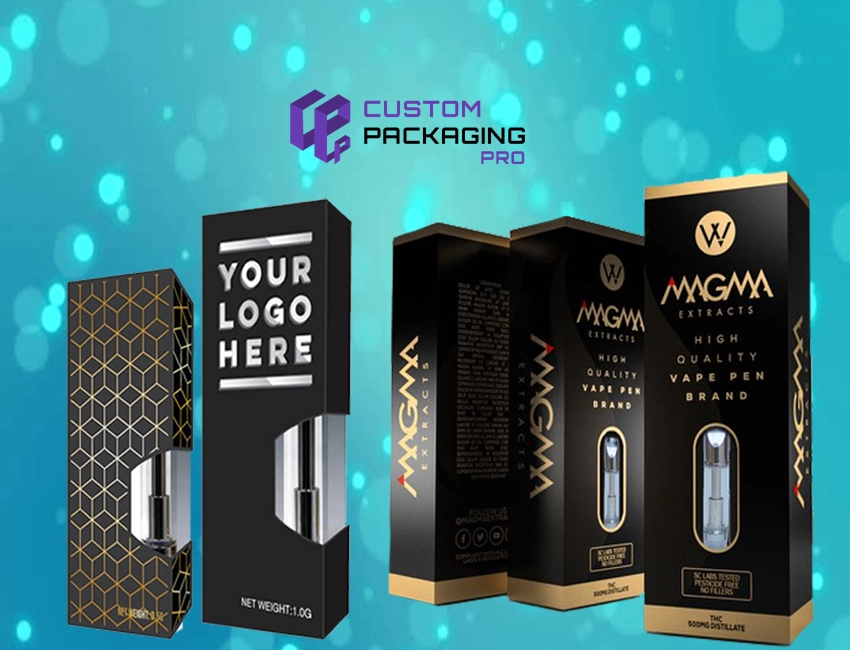November 27, 2019
Vape Cartridge Packaging – Is Glass The Ideal Packaging Choice?
Carefully choosing the right packaging material is the key to success. Especially when manufacturing delicate items that can easily break, such as vape cartridge packaging. You need the best material that is sturdy and ideal for the product. You don’t want anything that will damage the sensitive item or cause it to break. In this regard, glass may not be the most suitable choice for such a product because it can cause damage to health, too, and not just the product. So it’s best to be careful with it.
However, that is not the only product you must be careful with when choosing glass. When you are about to decide on glass as your prime material for packaging, there are many things to consider.
Bottles and jars are among the most common types of glass packaging. These can hold wine, beverages, jams, and peanut butter. It may be the ideal choice for these products and may have a lot of benefits, too. For instance, it’s inert, meaning the material will not react with whatever is packed inside the glass. It won’t cause any difference to the beverages’ flavor or anything unless you find a crack in it, and it may cause the drinks to leak. In saying that, it still lets the fluids smell.
Glass is also readily recycled, so there are many benefits to using glass as your prime choice of packaging.
Downsides of Glass Packaging to Keep in Mind
But that doesn’t mean the packaging option doesn’t have any downsides. If you look closely at these disadvantages, your business can be in trouble, making it an inappropriate choice for your products. Consider the following when choosing glass as your packaging medium:
Glass Is Fragile
The reason you pack your items is to give them protection. But what if you have to protect the one thing protecting your product in the first place? That doesn’t sound appealing to me. It may be strong, it may hold its shape, it may be firm, and it may easily support any content that is packed inside. But that doesn’t change that it's still fragile, and anything inside is somehow unsafe. You still need to ensure your packaging is safe and secure to ensure your product remains the same. Talk about cutting down your budget!
If there is any substantial impact, it can easily fracture or crack the container. Once this happens, the container becomes useless for the manufacturer, and they will have to waste the packaging.
Metal and cloth can withstand sharp blows, and nothing ruptures or leaks. On the contrary, glass is quite vulnerable to any sharp temperature changes. Heating the glass and exposing it immediately to air or cool water is enough to shatter it.
It Can Be Heavy
Compared to other materials like plastic, paper, or metal containers, glass tends to be the heaviest. When the weight is more significant, so will the shipping cost. A general rule is that the price of all these factors is added to the product's final price. So yeah, the shipping price has also been passed on to the consumers. Considering this factor, alternate containers that are lighter in weight seem like the ideal and attractive option in comparison to glass for many businesses.
While many consumers would love to get their wine in a glass container, manufacturers have also experimented with cans and boxes as the next best thing to sell it in. Then, some businesses have tried to thin down the glass they are using to get the same benefits they would from the material without adding all that weight.
They Are Not That Safe
A simple crash will cause the glass to break—it’s as simple as that. Moreover, in its broken form, glass is the most dangerous of all, not only for kids but adults, too. A torn paper cannot harm, but glass can cause damage that can sometimes be life-altering. Glass has sharp edges. It can break the skin with ease. Also, all the teeny tiny pieces are pretty hard to find if they fail.
Now think of it this way: Broken shards of glass are hard to find, especially in edible items, making them impossible to eat. If swallowed unnoticed, they can cause grave internal harm. Thus, glass is the most inappropriate choice for food items and beverages.
Opening and Closing Is Not an Easy Task
Metal containers, plastic pouches, and custom cardboard boxes are easy to seal or close. However, finding something suitable or ideal to seal glass containers is tricky. You will need a lid, a bottle cap, or a cork to close a glass food container.
With all these downsides regarding glass, it’s best you choose cardboard boxes with lids, or maybe metal or plastic. Glass tends to have grave consequences in many instances, so you need to be careful when using it as your product's ultimate packaging. However, if you are a food or beverage company, you must be extra cautious using glass. It’s best to consider every factor because you have your final choice.










